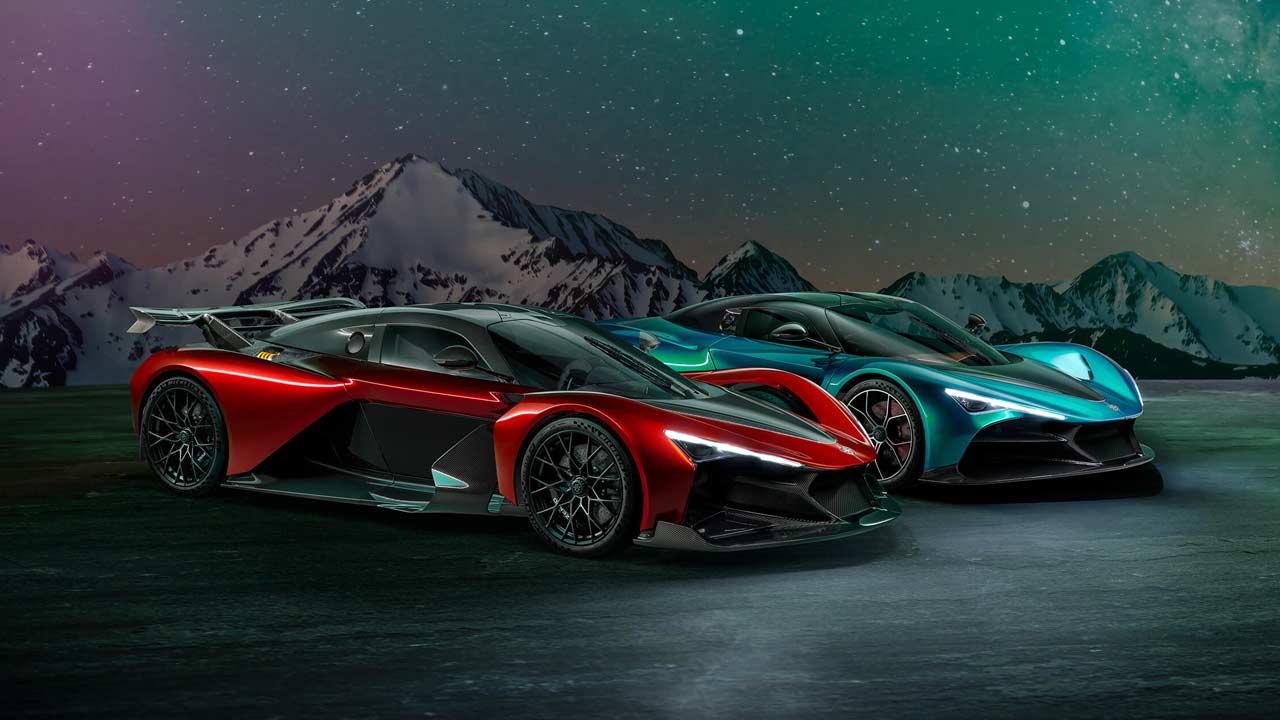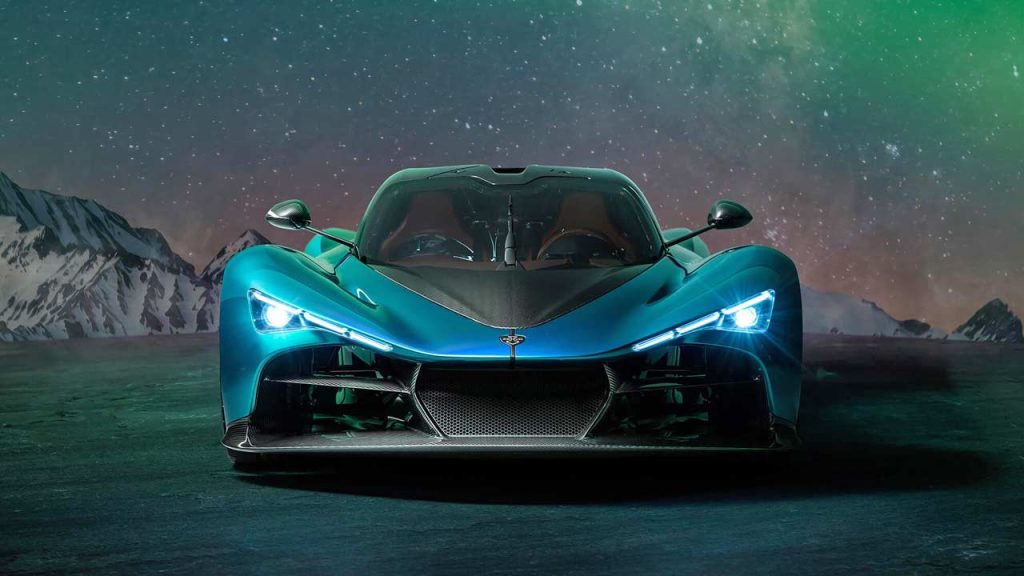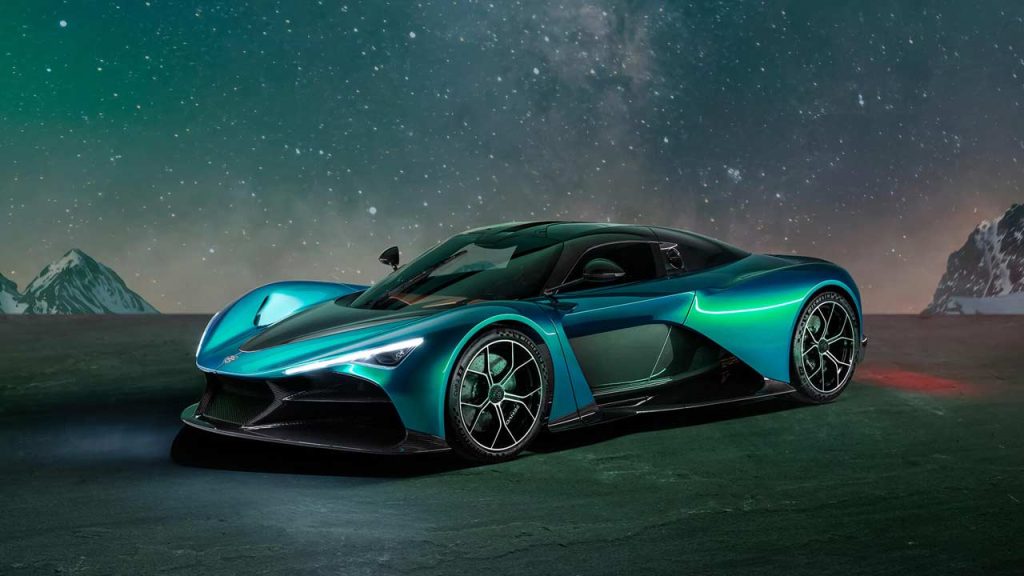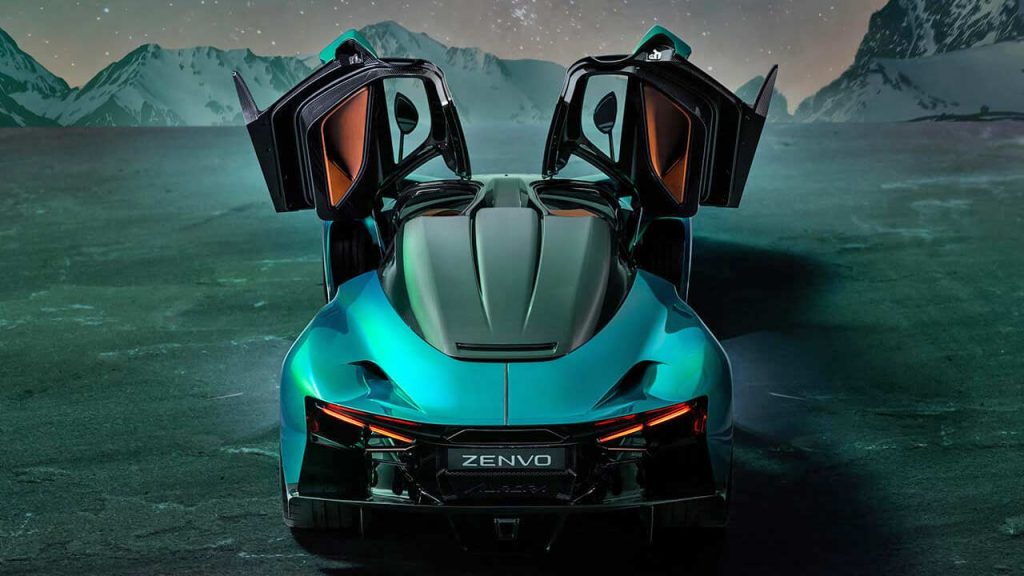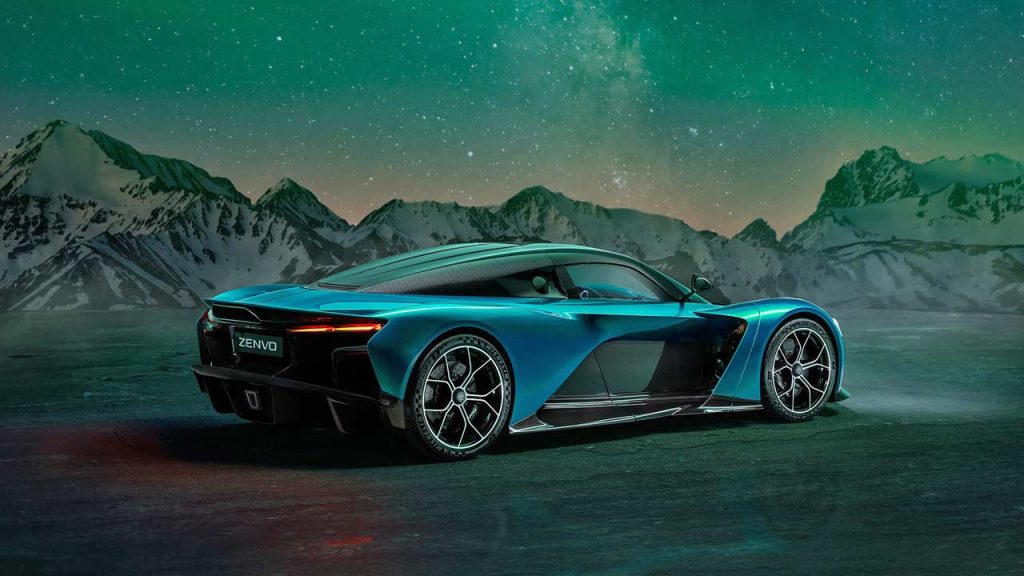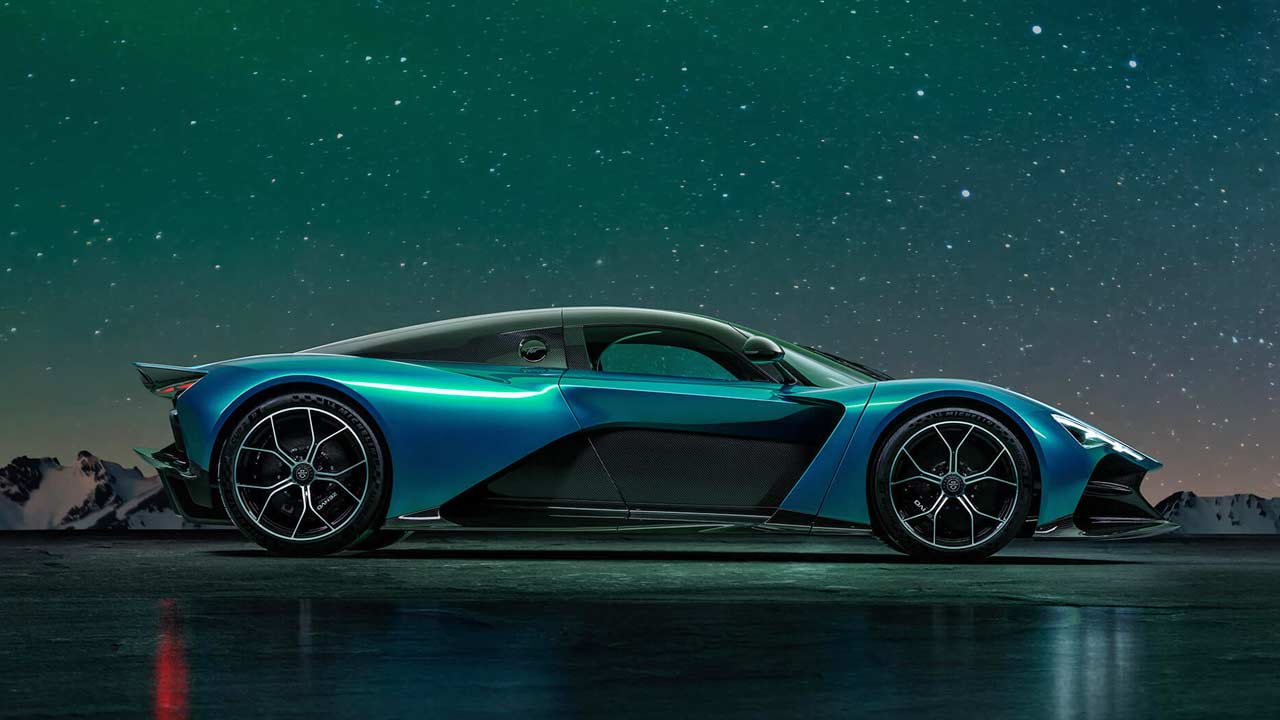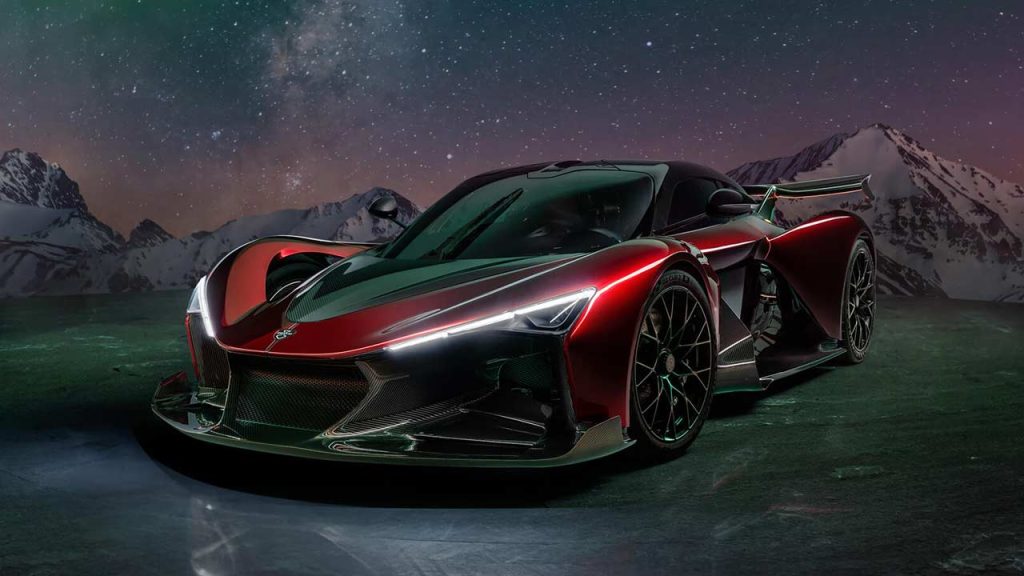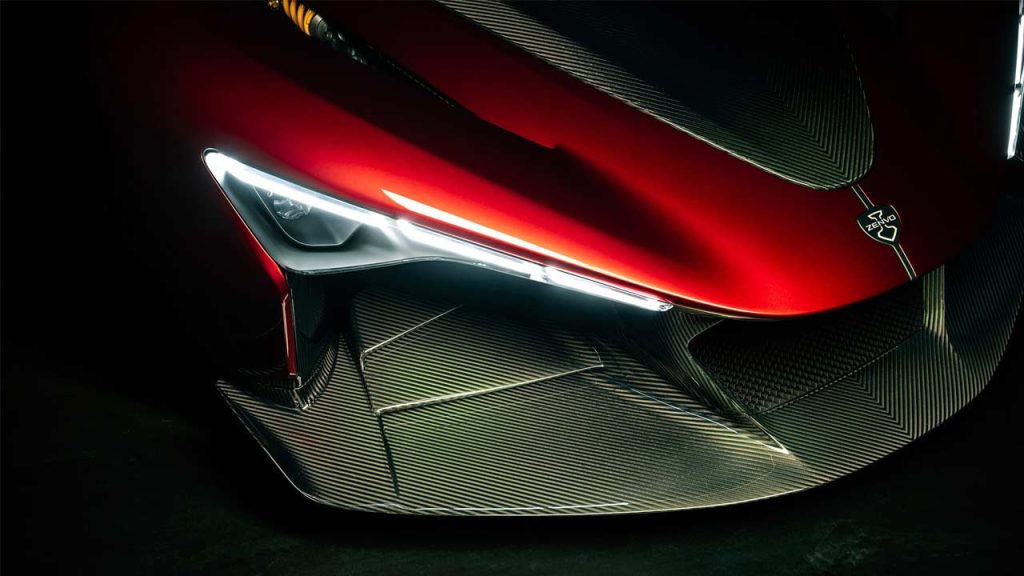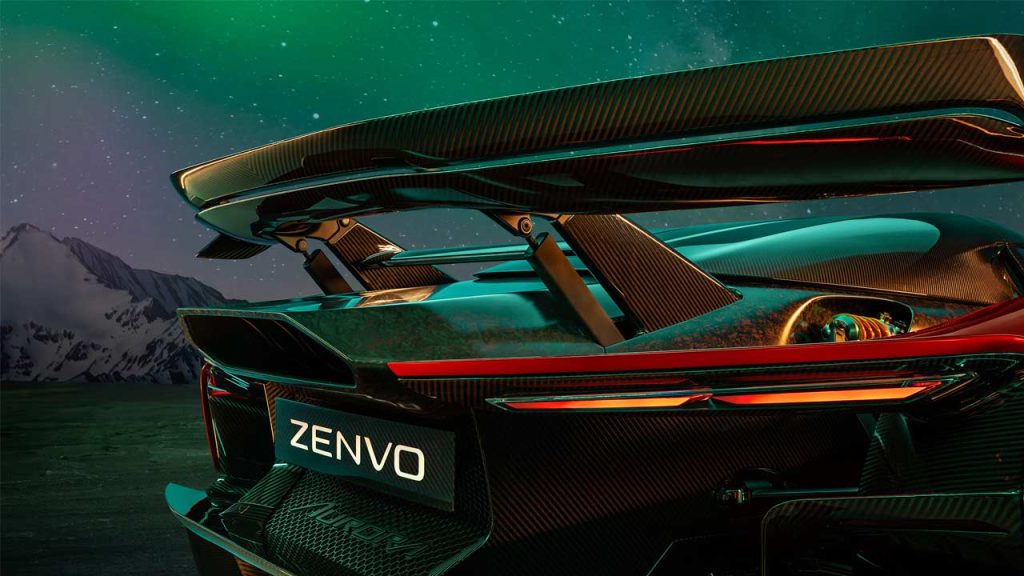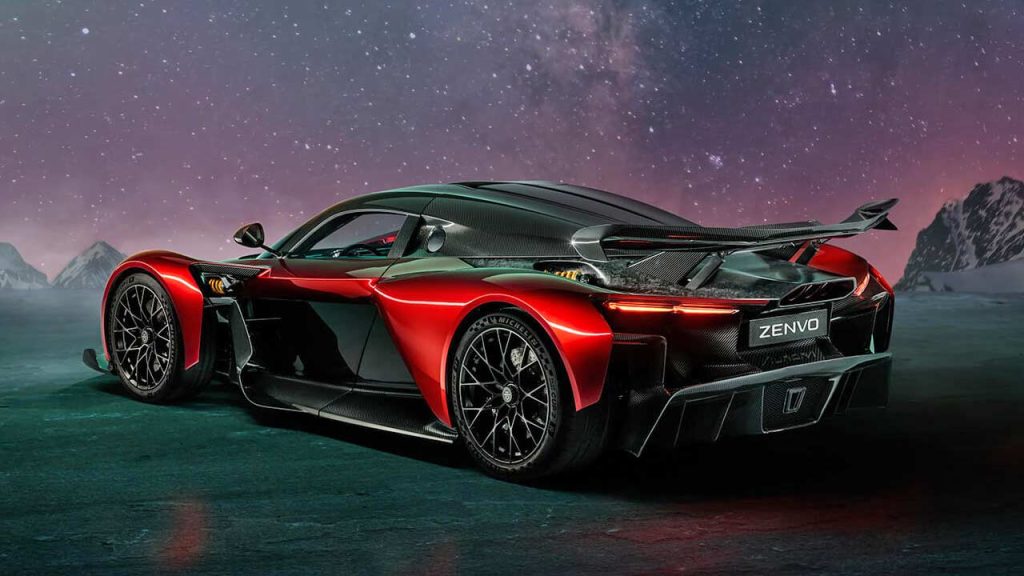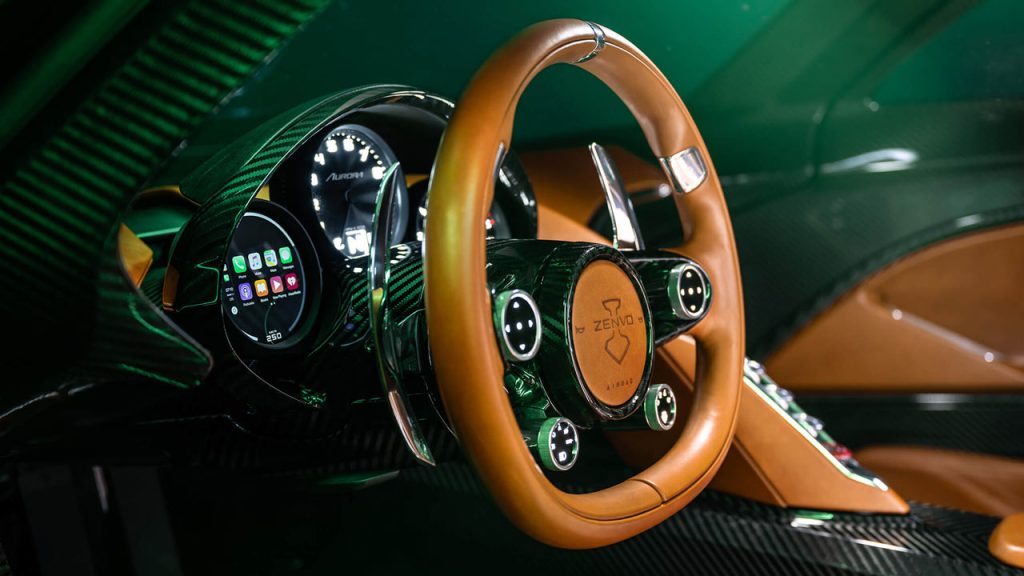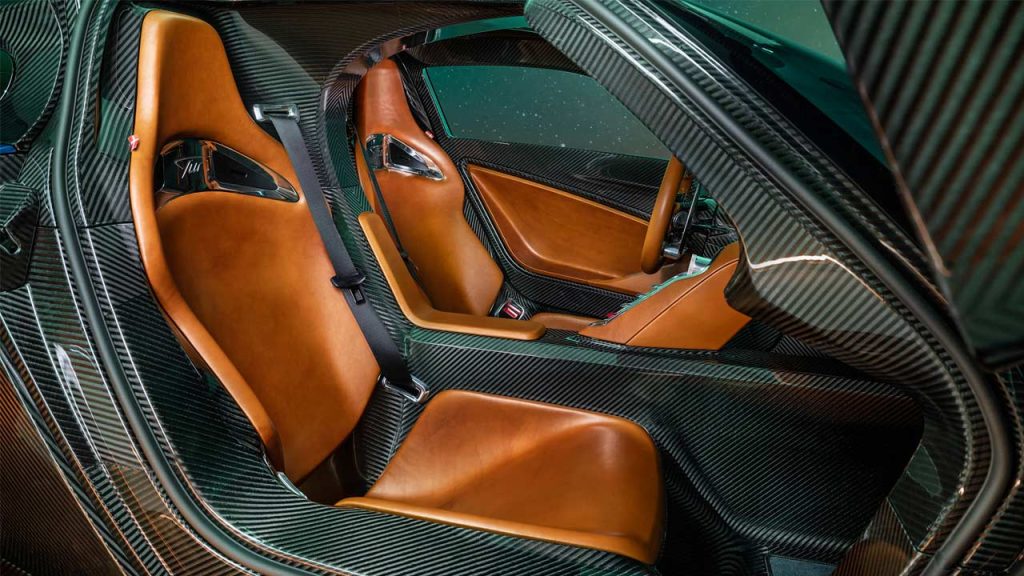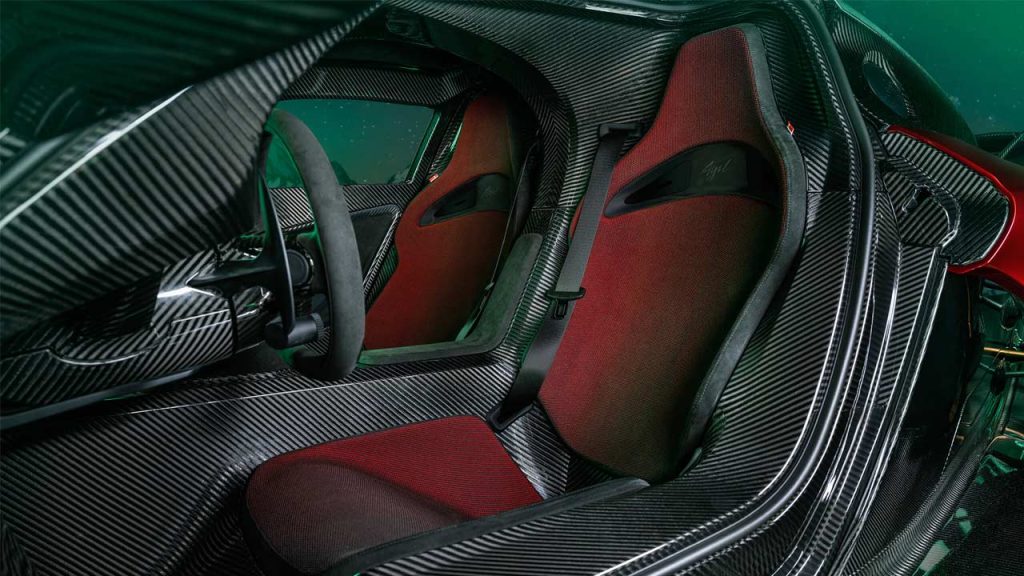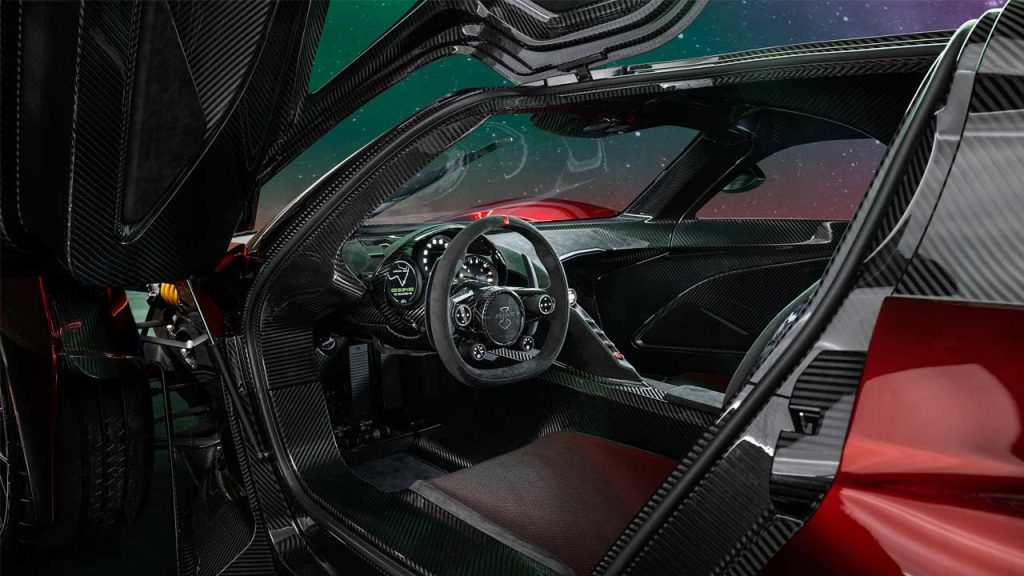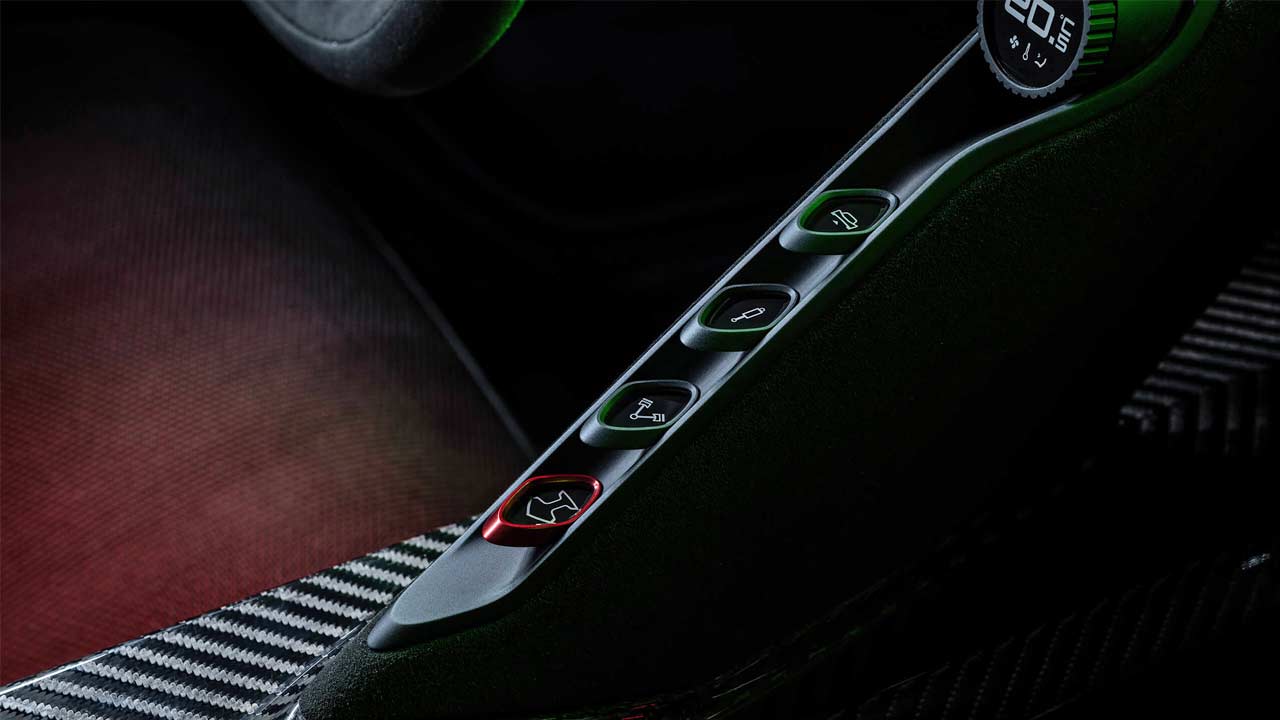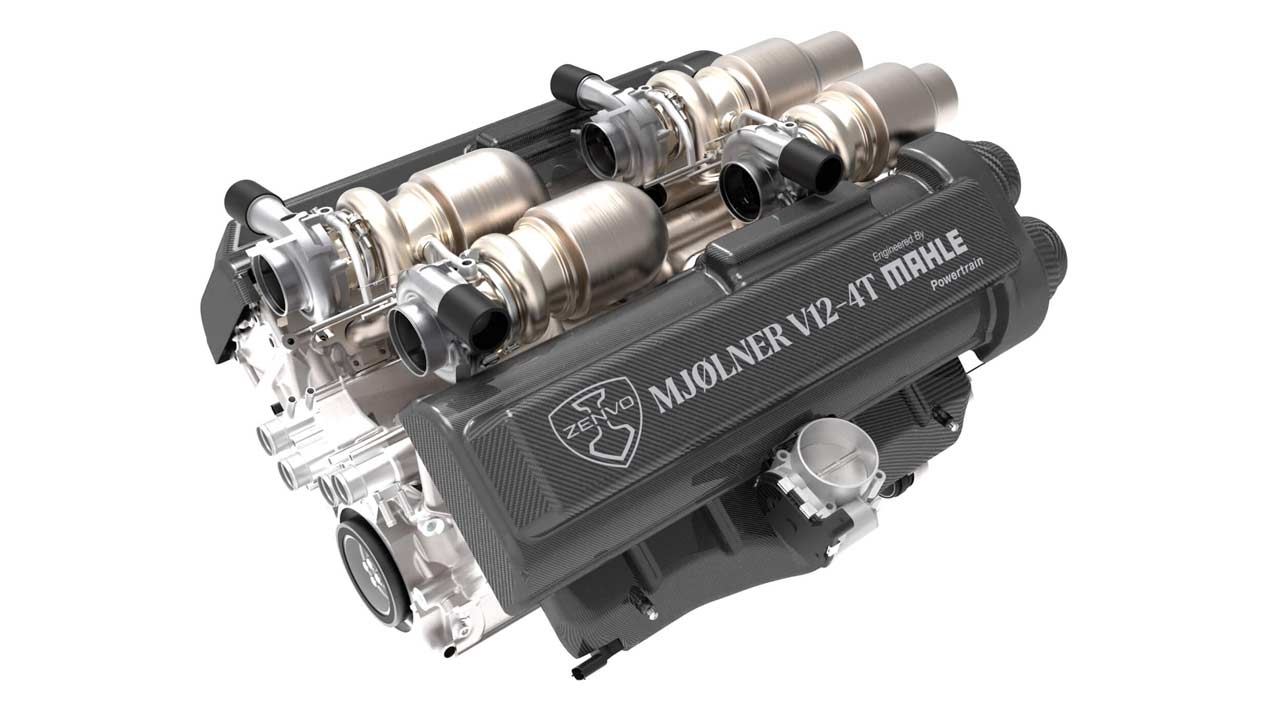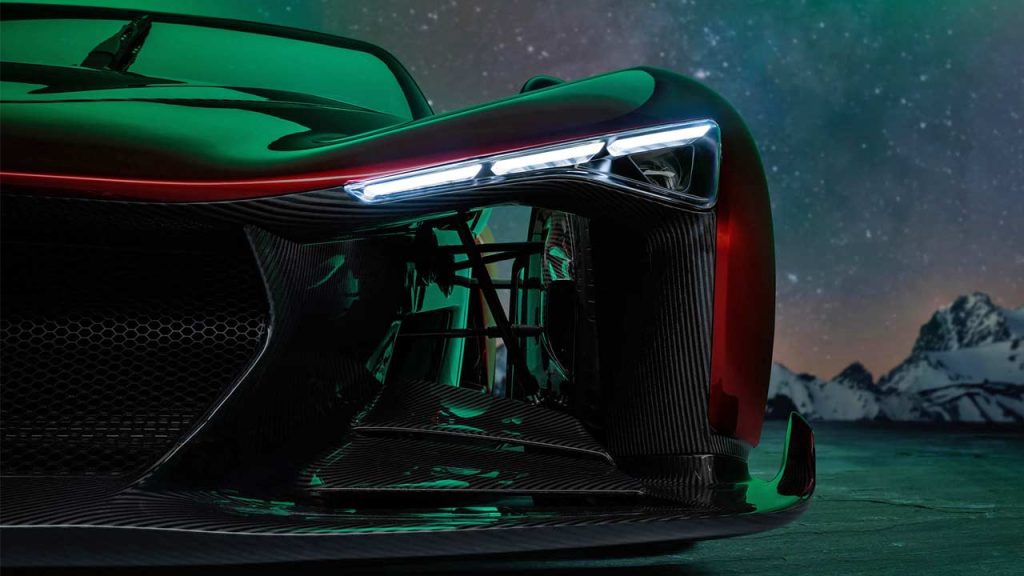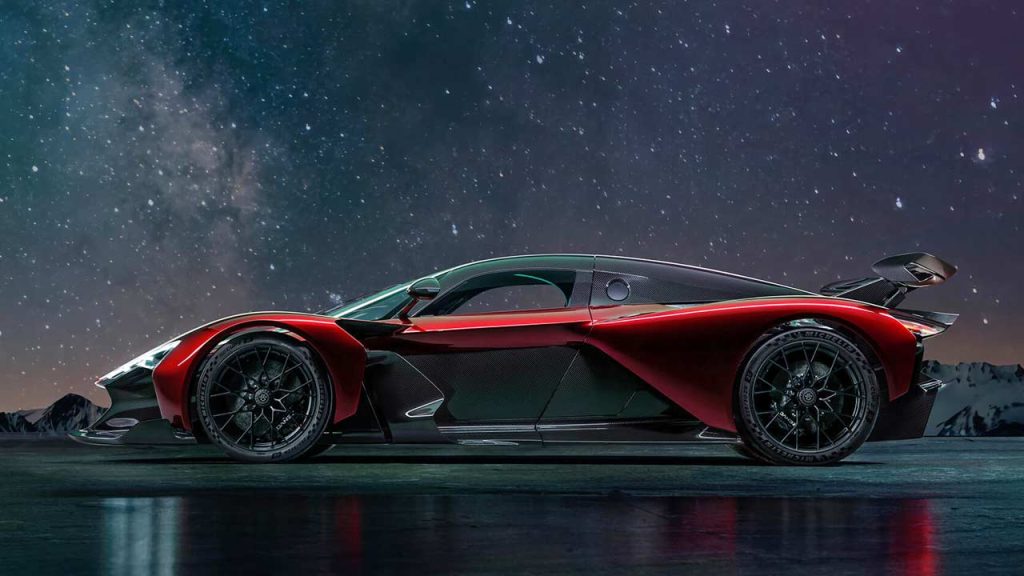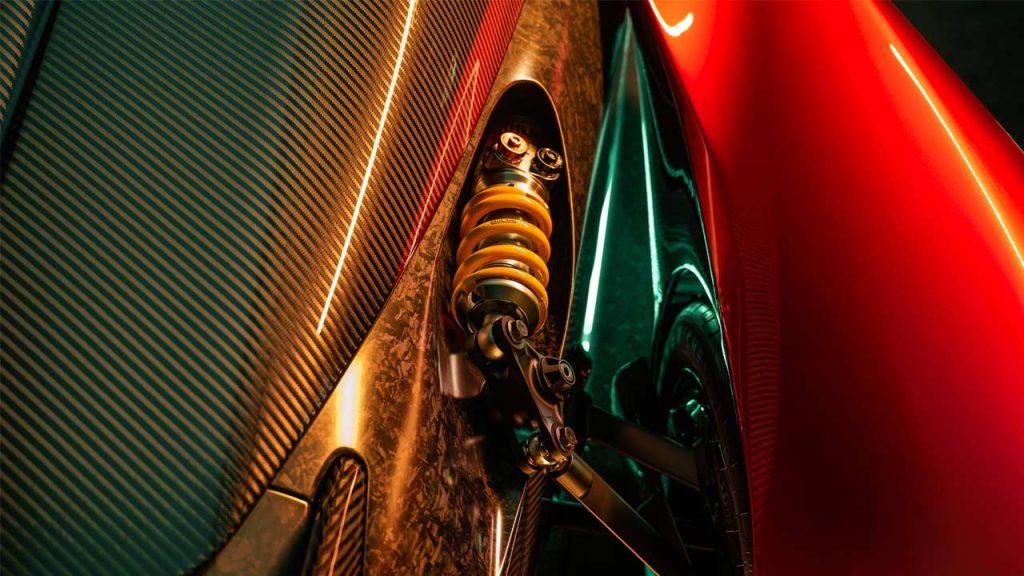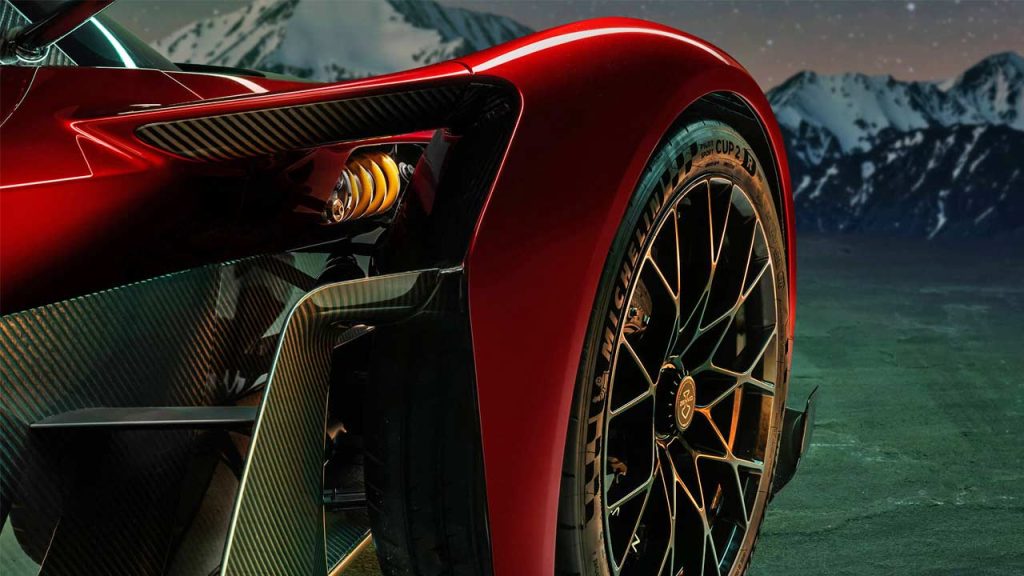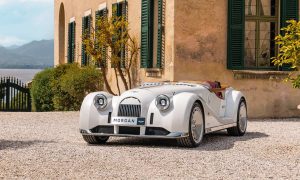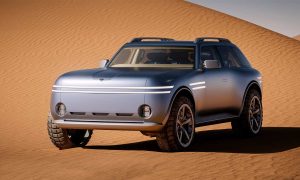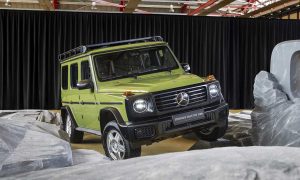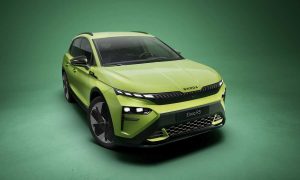Zenvo calls the Aurora its second chapter, but it’s really the third chapter following the ST1 and TS series. There’ll be two variants of the Aurora: Aurora Agil and Aurora Tur, translating to ‘Agile’ and ‘Touring’, respectively. Zenvo is building 50 examples of each model, with production commencing in 2025, followed by first deliveries in 2026.
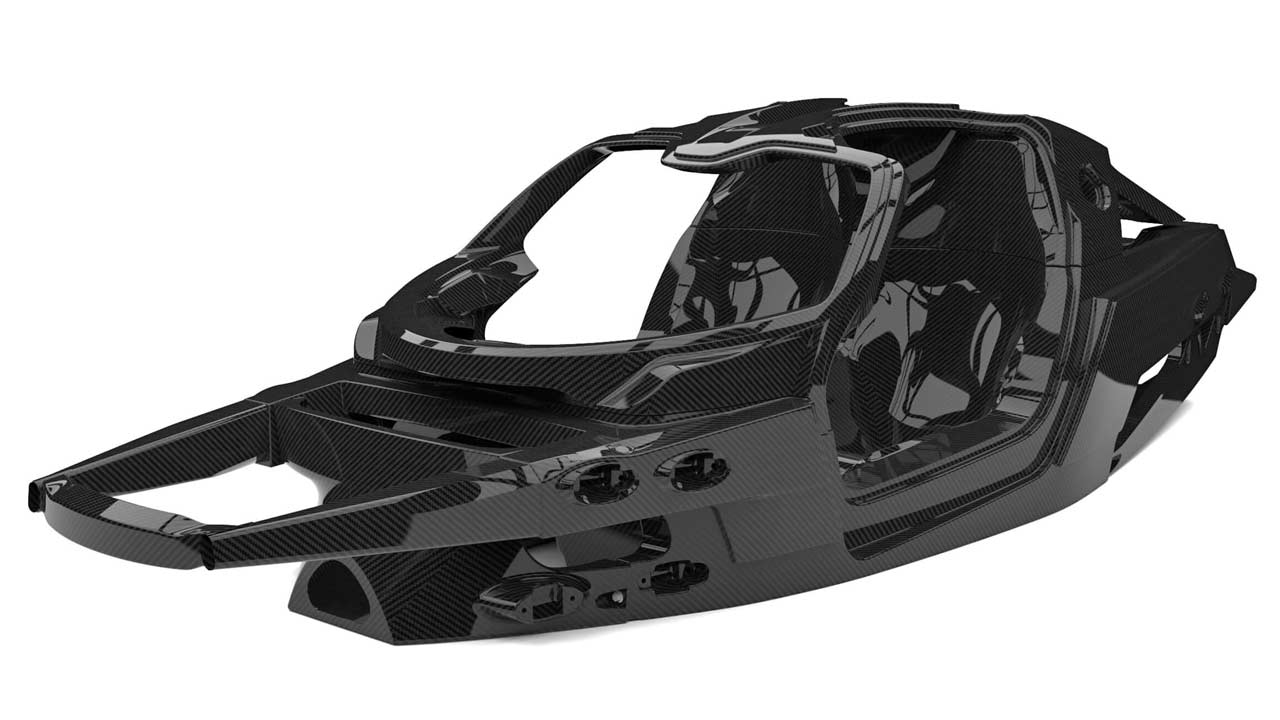 ZM1 modular system integrates the monocoque as well as the front and rear subframes into a single component; weighs less than 120 kg (265 lbs)
ZM1 modular system integrates the monocoque as well as the front and rear subframes into a single component; weighs less than 120 kg (265 lbs)
The Zenvo Aurora is billed as the brand’s lightest and most powerful offering. It is built on a new carbon composite monocoque that contributes to the Aurora Agil’s dry weight of <1,300 kg (2,866 lbs) and Aurora Tur’s dry weight of <1,450 kg (3,197 lbs). The body panels are also, of course, carbon composite.
Let’s start with the Aurora Tur then, shall we? It is mainly intended for road use and therefore has a relatively relaxed look compared with its track-focused sibling Agil. Designed in-house by Chief Designer Christian Brandt, the Aurora—according to the company—adopts the philosophy of “form follows function” with inspiration from Arne Jacobsen’s use of negative space. Which explains all the gaps and gapes the car has. I don’t know about you, but I do see the design lineage when I see the car from the front and front-three-quarter angles.
Suspension setup includes pushrods at the front and double wishbones at the rear with active springs. The Aurora Tur rides on bespoke aluminium centre-lock wheels measuring 20-inch at the front and 21-inch at the rear, wrapped with Michelin Pilot Sport Cup 2 tyres measuring 265/35 at the front and 325/30 at the rear. Braking duties are handled by carbon ceramic discs.
The Aurora is a fairly large hypercar, measuring 4,819 mm long, 2,020 mm wide and 1,117 mm tall, with a wheelbase of 2,800 mm.
Next up we’ve the Aurora Agil—which according to the company, is an extreme translation of the Tur. It wears a more aggressive bodykit that includes an active rear wing that complements Aurora’s standard underbody aerodynamics. The rear wing also functions as an air brake. Thanks to a more aggressive design, the length and height vary: 4,836 mm (+17 mm) and 1,097 mm (-20 mm), respectively. The car rides on magnesium centre-lock wheels of the same size, with an option for Cup 2R tyres.
The Aurora Tur’s cockpit already looks stripped, but the Agil’s cockpit is even more stripped of comforts and unnecessary luxuries, and therefore contributing to that 150 kg (331 lbs) less weight. The Agil is claimed to deliver a downforce of 880 kg (1,940 lbs) at 250 km/h (155 mph). The instrument binnacle is a mix of analogue and digital affair, with no traditional central touchscreen on the dashboard (you can imagine Gordon Murray smiling).
That left circle in the instrument binnacle is a speedometer, but at the press of a button, it can flip into an infotainment screen. There’s a bit of Pagani vibes, right?
I absolutely love this centre console design. But anyway, at the heart of both Auroras is a Mahle-developed 6.6-litre quad-turbocharged V12 engine that revs up to 9,800 rpm.
The engine develops an estimated 932.5 kW (1,250 bhp/1,268 metric hp). The engine is coupled with a 7-speed gearbox with an integrated 150 kW (201 bhp/204 metric hp) electric motor. There’s an electric motor for each front wheel with an output of 150 kW each, and therefore there’s no need for a mechanical reverse gear.
The combined output figures, however, are 1,380 kW (1,850 bhp/1,876 metric hp) and 1,700 Nm (1,254 lb-ft). If you do a simple math, the power-to-weight ratio of Aurora Tur is ~1.28 hp/kg. The hypercar is estimated to sprint from 0-100 km/h (62 mph) in 2.3 seconds and on to a top speed of 450 km/h (280 mph).
As for the Aurora Agil, the combined figures are gonna be 1,082 kW (1,450 bhp/1,471 metric hp) and 1,400 Nm (1,033 lb-ft), resulting in a power-to-weight ratio of ~1.11 hp/kg. The official performance figures in this case are 0-100 km/h (62 mph) in 2.5 seconds and a top speed of 365 km/h (227 mph).

Leave a Reply
Note: Comments that are unrelated to the post above get automatically filtered into the trash bin.
